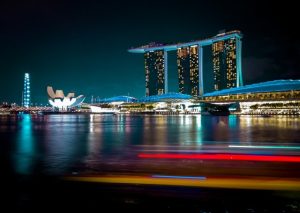Second Minister for National Development, Desmond Lee, speaking at the REDAS 60th Anniversary Dinner advised developers to pace out real estate launches to match demand of home buyers. He said that the property market has a direct impact on the lives and aspirations of Singaporeans; that is why it is important that it remains stable and sustainable.
He shared that the Government’s approach to the property market, is to keep the property market stable and sustainable, with prices moving broadly in line with income growth.
“We cannot take a “hands-off” approach to the property market, because experience both here and abroad has shown that left to itself, it tends to go through large price swings, which harms genuine homebuyers and home owners. Today, the market is broadly stable, in part due to active measures that were implemented in July last year.
“Compared to the first half of last year, private housing prices appear to be moving more in line with economic fundamentals. We also observe that land bids over the past year have also been more cautious. These are signs that the market is not overly exuberant, but growing at a more sustainable pace.”
While asking developers to pace out real estate launches, Mr Lee also explained why it was important to keep an eye on the global outlook as it would have an impact on real estate here.
“Some commentators have also raised concern that global economic uncertainty might actually attract foreign capital inflows to our local property market, as Singapore properties are seen as stable assets. At this point, the share of transactions by foreigners remains stable and low, accounting for 5 to 6% of total transactions over the past three quarters. But we will continue to watch this very closely.
Within the domestic market, we expect more supply of private housing units to come on stream. Developers should pace out the launches steadily, to match the demand from buyers.”

The Minister explained that his call to pace put real estate launches is in line with taking a long-term approach to housing: to build good homes for Singaporeans, and work towards a stable and sustainable property market.
Table of Contents
Pacing out real estate launches will benefit the majority of stakeholders – developers and home buyers alike.
In the same speech where he called for developers to pace out their real estate launches, Mr Lee also highlighted about what is to come in the real estate sector.
“First, our skyline will continue to evolve and change; we are not done building Singapore however small we may think this city is. For example, many of you are familiar with our long-term plans for the Greater Southern Waterfront and the relocation of Paya Lebar Airbase. The plans for Jurong Innovation District have also just been exhibited, and we are working on our Underground Masterplan.
Second, the threat posed by climate change is urgent and pressing. Like all sectors of society, our building industry and our real estate industry must also rise to the occasion, and play our part. There are two key aspects to this. The first is on carbon emissions mitigation – we must make our sector more sustainable by making green buildings a priority while continuing to push for more Net Zero or Super Low energy buildings. Let’s do it together. On adaptation – we will require a range of engineering solutions to address the impact of climate change upon us. And, we need to master new skills, such as developing coastal defence technologies, which could include sea walls, pumping stations and land reclamation. These protect Singapore from rising sea levels. It is important for every one of us to be fully invested in this, as the cost of inaction will be far greater.
Third, through partnership and with the help of technology, we aspire to build and maintain our city more effectively and sustainably. And, it can energise our built environment sector, and create good jobs at the same time. In 2017, partners from across the entire building value chain from front to end came together, for the very first time, to lay out the plan and direction for the sector’s integration and transformation, and more importantly, to execute our plans together…
The fourth aspect in the future of opportunities is research and innovation. We want to actively support you in the journey of innovation, recognising the potential it holds to transform our sector and transform your firms, beat the competition locally and abroad. For example, we’ve established a fund called the BuildSG Transformation Fund. It supports research, deployment of test pilots, and helps you fast-track innovative solutions. We have also set up the Built Environment Technology Alliance (BETA), to support you in developing and adopting building technology solutions.
The fifth and final aspect in the future of opportunities is how we can work together to better create, activate and energise our common spaces. We can build well and maintain well, but for a good value proposition, we want developments, the building and the infrastructure to be energised. Through place-making and management, various stakeholders coming together to activate our public spaces and create more vibrant precincts. For example, through the pilot Business Improvement District (BID) programme, we have seen many good initiatives across different areas – it involves developers, businesses, community and the agencies all working together – that enliven and strengthen the activities and identity of our precincts. Kampong Glam, Tanjong Pagar and Singapore River are good examples of communities that have tapped on the BID programme to inject new life into the area. Because ultimately, developments are not brick and mortar, glass and steel, but places that people work, live and play. BID energises spaces and gives people a sense of happiness. For this to succeed, partnership is key; so let’s work together to make our city more vibrant.”






